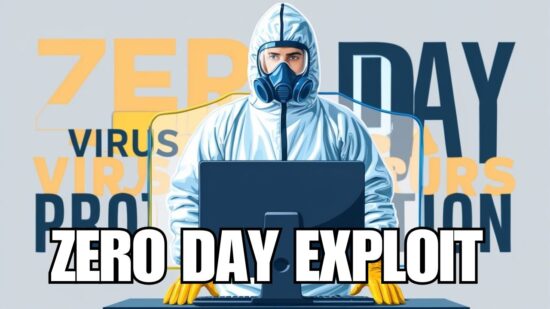Cybersecurity & Business Goals
Why You Shouldn’t Sacrifice Cybersecurity to Attain Other Business Goals
As technology advances rapidly and businesses embrace digital transformation through machine learning, automation, and cloud adoption, cybersecurity is becoming a critical business function.
Yet despite the recent surge in cyber-attacks, most businesses don’t consider it a top priority and sacrifice investing in cybersecurity to attain other business goals.
Cybersecurity risks aren’t limited to your information technology only; they are also a big risk to your entire business. Failing to invest in cybersecurity could result in dire consequences if a cyber-attack occurs. The reputation of your business could be tarnished, you could incur heavy financial penalties, and in the worst-case scenario, your business may shut down entirely.
This post will shed light on why you shouldn’t sacrifice cybersecurity to achieve other business goals. But first, a quick definition of what cybersecurity is.

What Is Cybersecurity?
Cybersecurity is the process of establishing measures to ensure your business’s data is safe from attacks from both external and internal threat actors. It can encompass a body of processes, technologies, structures, and practices used to protect computers, networks, programs, and data from unauthorized access or damage. The objective of any cybersecurity strategy is to ensure data integrity, confidentiality, and availability.
Cost Vs. Security
Revenue is the lifeblood of any business, and a company that operates without a clear revenue generation strategy is poised to fail. Nonetheless, solely focusing on short-term goals without investing in other crucial business functions can lead to long-term problems.
Most business executives question the cost versus the benefits of cybersecurity. They feel like they need to channel funds towards employee resources and business expansion ventures. Cybersecurity is usually at the bottom of the list when it comes to resource allocation in most businesses.
While the dilemma of “Cost vs. Security” has been hotly debated in recent years, it is clear now more than ever which one is the clear winner. The damage caused by cyber-attacks in 2021 was devastating, to say the least:
- Remote work has increased the average cost of cybersecurity by $137,000
- Cybercrime has increased by 600% due to the COVID-19 pandemic (PurpleSec)
- The global average cost of a data breach is $4.24 million (IBM)
- 94% of malware is delivered through email
- 95% of cybersecurity is as a result of human breaches (Cybint)
The costs associated with data breach recovery are usually several times more expensive compared to the costs of investing in cybersecurity and adequately training staff to uphold cybersecurity best practices.
What Are the Consequences of Failing to Prioritize Cybersecurity?
According to a recent study by Accenture, approximately 55% of large companies aren’t effectively stopping cyberattacks, identifying and fixing breaches, or reducing the impact of breaches. This is probably the same case with smaller businesses.
This happens because most business leaders have a couple of reasons for not putting cybersecurity at the top of the list of their priorities. Typically, the daily business operations hinder them from prioritizing security and including it in their to-do list. Alternatively, it may be that they believe that cybersecurity costs too much—many pieces of equipment and employee resources are required.
Even so, these decisions often come back to bite them when they become a target of threat actors. Some of the ways cyber attackers can impact your business include:
- Infecting your devices with malware such as spyware, viruses, and Trojans
- Shutting down your business using a ransomware attack
- Phishing and email attacks
- Theft of unauthorized or sensitive data
- Shutting down business services using denial of service attacks
- Targeting suppliers or other third parties linked to a business
Previously, cybercriminals often attacked large organizations because of the financial incentive they would gain if the attack was successful. Nonetheless, since large organizations have more robust security strategies in place, often it’s the smaller organizations that bear the brunt of cyber-attacks. Here are some of the consequences of a cyber-attack:
- Loss of business reputation and potential closure of the business
- Disruption of operations
- Destruction of business assets
- Loss of customer and employee trust
- Stolen sensitive data, funds, or intellectual property
- Costs of investigation and security actions
- Costs of legal action, regulatory fines, and impact on associated businesses
In general, the average cost of a cyber-attack is around $133,000. This is the total average for all types of cyber-attacks. With such lucrative end results for cybercriminals, it comes as no surprise that cybercrime costs have grown by 15% annually over the past 5 years.
How Can Cybersecurity Be Prioritized?
One of the silver linings of the COVID-19 pandemic has been the shifting of cybersecurity to the top of the minds of business managers. The adoption of new technologies and the sudden shift to remote work have forced businesses, both small and big, to rethink their stand on cybersecurity. Here are some of the ways businesses are prioritizing cybersecurity:
- Increased investment in cybersecurity: Given the prevalence of cyber-attacks and the high costs and other repercussions that emanate from these attacks, today, more than ever, businesses are investing in cybersecurity to protect their assets. From purchasing cybersecurity infrastructure to building human firewalls by training employees on best cybersecurity practices, no business wants to fall victim to these attacks.
- Aligning cybersecurity with business goals: By understanding the disparity between cybersecurity and business priorities, managers can create measures to ensure that the two strategies are aligned such that major priorities are addressed first. It will also ensure that resources are allocated accordingly.
- Identifying potential vulnerabilities: Business executives must work hand in hand with CISOs and IT security teams to identify internal and external vulnerabilities, as well as other potential risks affecting the cybersecurity landscape.
- Defining roles and responsibilities of everyone in the organization: When everyone in the organization understands their roles and responsibilities, there can be seamless protection of business assets.
Let On-Site Computers Help Optimize Your Cybersecurity
Do you need an IT service provider pronto to beef up your cybersecurity? On-Site Computers is your go-to choice. Our solutions are designed to protect your business from cybercrime. We understand the importance of preserving the integrity of your sensitive business data. With our cybersecurity solution, you need not worry. Contact us and start a conversation about your cybersecurity requirements and business objectives.
Thanks to Ulistic HPC member, Holden Watne at GenerationIX, a managed IT services professional in Los Angeles for his help with this article.






